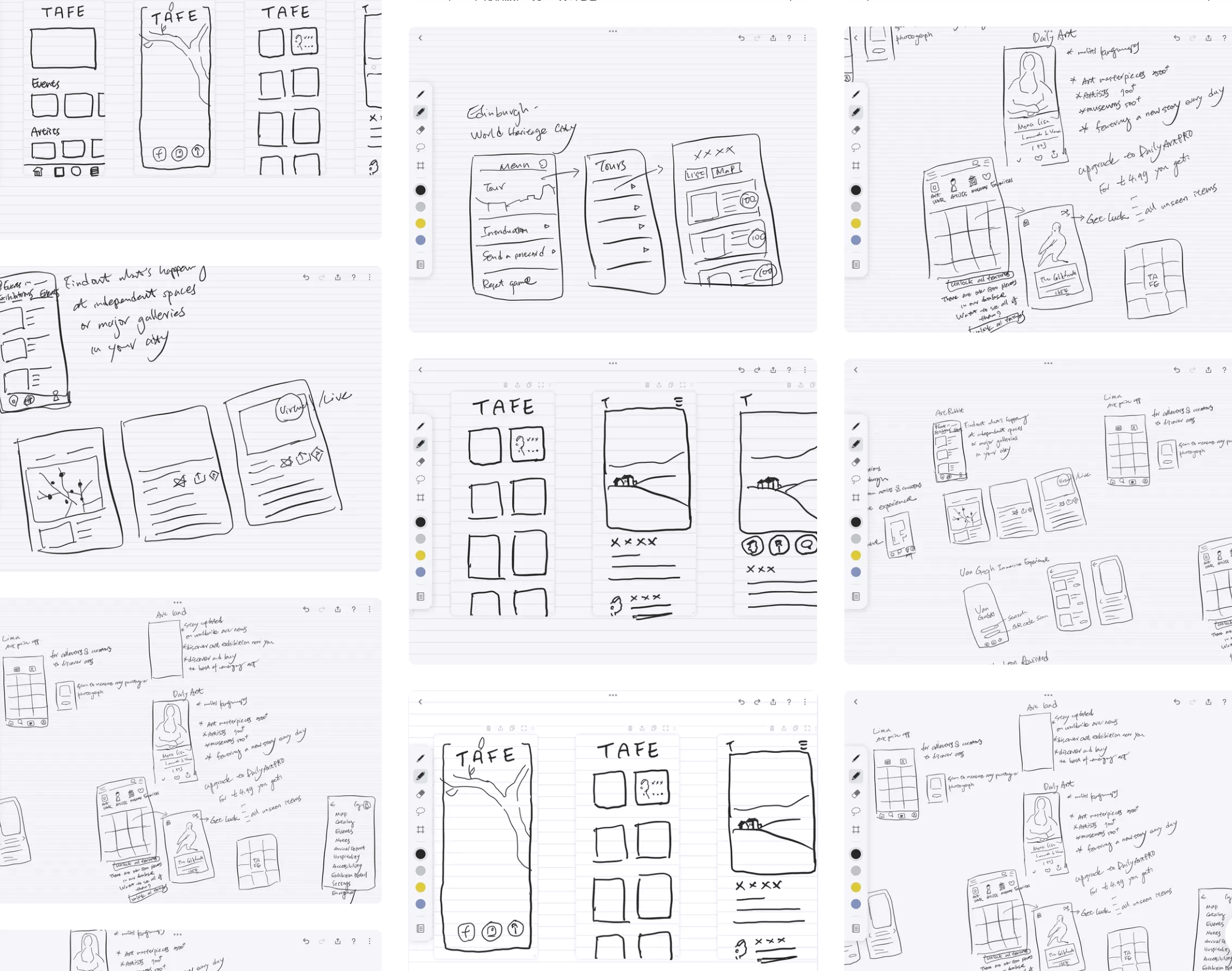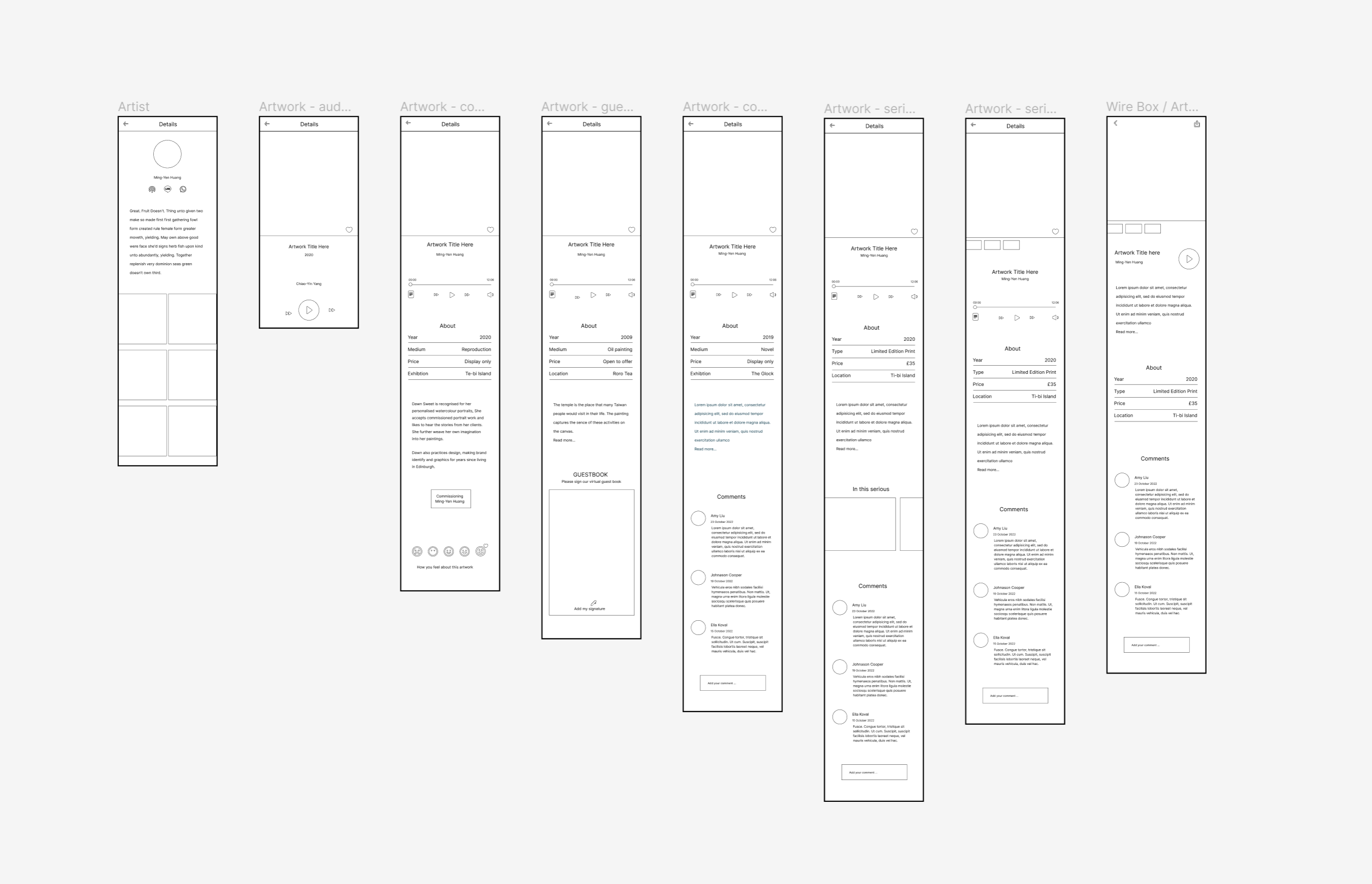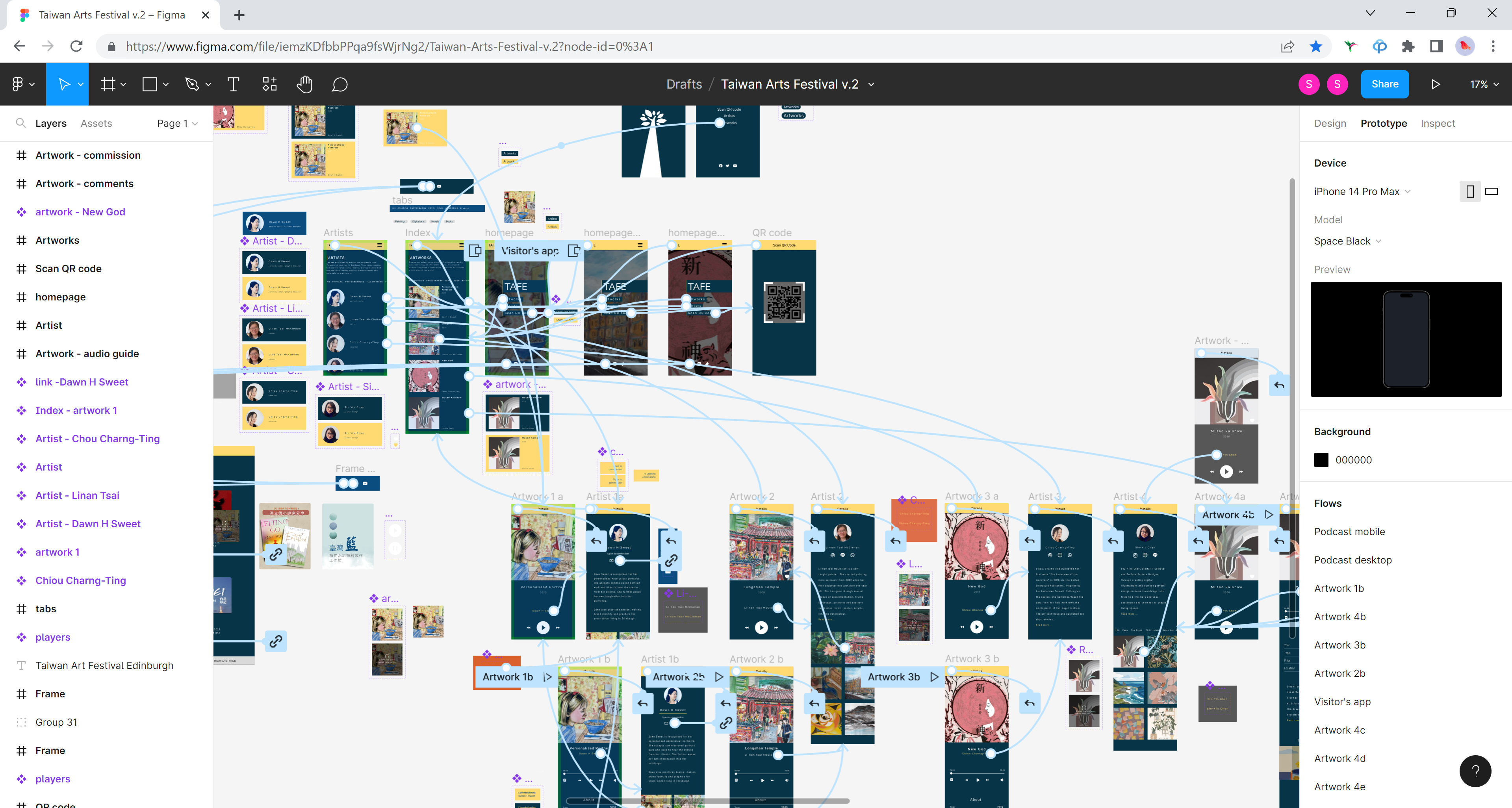Taiwan Arts Festival Podcast
Podcast production and website design
Project overview
Project duration: 4 months
Role: Podcast producer, podcast host, website UX and UI designer
Product types: Podcasts, responsive website, visitor app prototype
Podcast content production: Audacity, cSubtitle, Miro, Adobe Photoshop, and Illustrator
Podcast audience management platforms: Anchor, Apple Podcasts Connect, and First Story
Website design and implementation tool: Figma, Balsamiq, Adobe Photoshop
Website user analytics platform: Microsoft Clarity and Cocolyze
Visitor app prototyping tool: Figma
This is a podcasting production project designed to promote the Taiwan Arts Festival in Edinburgh. My role was as a podcast producer and podcast website designer. I planned the podcast programme, interviewed artists, edited recordings, and managed the podcast distribution on several major podcast listening platforms, including Apple Podcasts, Google Podcasts, Amazon Music, Spotify, and others. Furthermore, I designed a responsive website, from concept to implementation, to promote this podcasting programme and festival events over the Internet. At the end of the festival event, I also proposed a visitor app to improve the in-person visitor’s art viewing experience.
The project started at the end of June 2022 and finished in October 2022. There are 8 interview-based podcast shows released from July to October. The podcast performed very well in Apple Podcasts rankings (Peak position at 188 within the Arts category for Taiwan).
Podcast production
Research, planning, and persona creation
Creating podcasts is a new endeavor for me. I conducted online research to gain insights into starting a podcast and expanding the audience for this festival. Once I grasped the fundamentals, I outlined a comprehensive plan to serve as a guiding framework. Additionally, I crafted personas representing the target audience groups. This approach enabled me to prioritize user perspectives when making decisions about podcast topics and web content. As the project evolved, the personas were refined to accurately mirror the actual podcast audiences and festival participants.
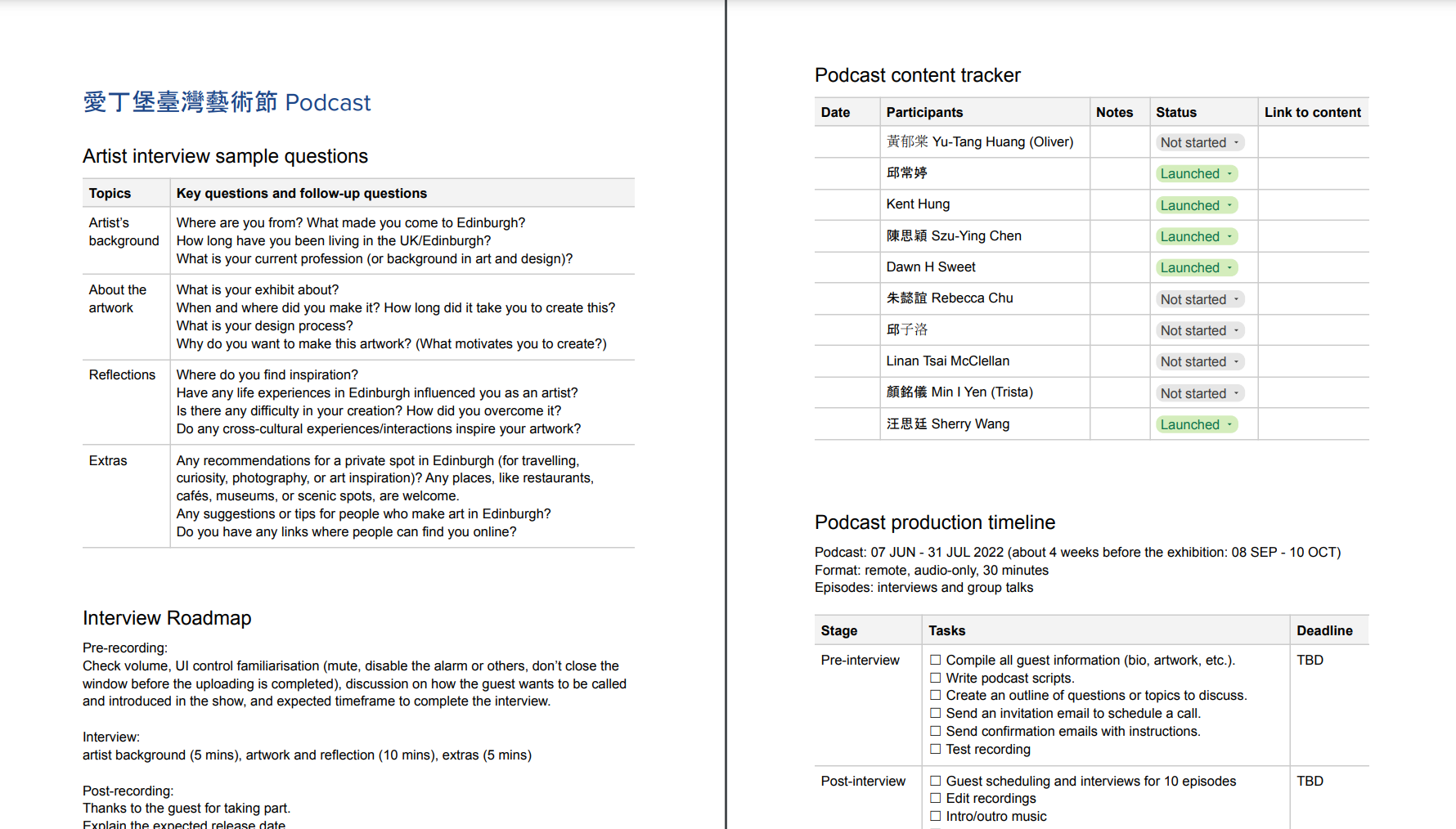


Remote interview
Considering the advantages of remote interviews such as improved scheduling flexibility and cost-effectiveness, I opted to conduct interviews with each artist via Zoom. I took the responsibility of preparing the interview questions, sending out invitations, and providing guidance for the remote interview setup. Prior to each interview, I conducted thorough background research on the artist’s work and the pertinent subject matter. Additionally, I explored my interviewee’s online audience persona through online searches to ascertain which interview topics and questions would resonate with our podcast’s listeners.
Recording and editing
The post-production process for each interview-based episode encompasses audio editing, designing the episode feature image, and creating web content.
For editing the recordings, I utilized Audacity to incorporate intro and outro sounds from Pixabay, enhancing the overall communication flow.

Textual content creation
To make the episode more appealing to the audience, I collaborated with a member of the Taiwan Arts Festival Society to add textual content to each episode and web page. I also added 3-min transcriptions on the podcast webpage to trigger people’s interest in listening to the show.
Podcast episode thumbnail design
I crafted thumbnail images for each episode to enhance the visual appeal and provide podcast listeners with a visual connection to the discussed artworks. Moreover, when presenting a sequence of podcast episode thumbnails showcasing various artworks, the podcast show can evoke the impression of an online art collection. This approach was aimed at inspiring listeners to explore the physical exhibition in Edinburgh.
The design process involved the use of Adobe Photoshop and Illustrator to edit selected artworks, including book covers, product photos, and paintings. These artworks were transformed into episode thumbnail images to fulfill this specific purpose.”

Podcast distribution
The finished recording and relevant content were uploaded to Anchor, a podcast hosting platform. To reach a wider audience on the Internet., I also distributed to other podcast listening platforms, including Spotify, Apple Podcasts, Google Podcasts, Amazon Music, Anchor, Sound On, and First Story. There were 8 episodes released between July and October 2022, and the podcast has good performance in Apple Podcasts rankings (position 188 in the category Arts in Taiwan). Currently, the podcast programme is closed. The screenshots below show our podcasts playing on mobile, tablet and desktop devices.








Website design and development
Planning
After launching the first three podcasts, I started designing and developing a podcast website in order to promote the podcast and make it easier for our potential listeners to find our content in one place. I created the listener journeys, and then outlined the possible points of contacts that can reach our audiences in Miro. This process also helped me identify the needed features in the podcast website design to support the marketing activities.

Wireframing
At this stage, I worked on translating design concepts into wireframes. I researched podcast templates and explored different podcast landing pages. Afterwards, I outlined potential features and layouts that could suit the project’s requirements using Balsamiq.
Visual design
The visual design of the podcast website is aimed at being consistent with our podcast show and establishing the brand image across the platforms and devices.
After releasing the first three episodes, I designed a simple page. This simple page was created for people to easily find all available podcast platforms to listen to this podcast show.
After I gathered some feedback and reviewed how the actual web users interact with the page (via the web session replays on Microsoft Clarity), I had some ideas about how to improve the UI designs. I later resigned the homepage to enhance the aesthetic appeal of the podcast programme and created more pages to enrich the web content and improve SEO.
When the team started to promote festival events, I also designed a series of event images. However, the event images and UI mocks were created, not implemented as the schedule was changed, leaving not enough time for the proposed designs to implement. I then came up with ideas to display the events with texts in a horizontal timeline, which is easier to implement within the given time frame, while maintaining a consistent branding style on the web.



Interactive Mockups
After creating UI designs, I made interactive prototypes in Figma to demonstrate how the site would work and gather feedbacks.
WordPress implementation
Using the mockups as a foundation, I used WordPress and other plugins to implement the design, ensuring that the web content is responsive across various devices. During this phase, I also dedicated time to enhancing the website’s accessibility and improving its SEO.

Responsive Podcast Website
The podcast website was launched at https://taiwanarts.online in August 2022 and closed on 31 October 2022. You can view the archived website for reference, however, the links to podcast shows and events are no longer valid.
Archived website: https://tafe.creatives.sbs/

Visitor app prototyping
During the festival, I noticed that visitors were only provided with a QR code to access additional information about the artwork over the Internet. However, this resulted in a fragmented experience when viewing different artists’ work, and it also relied on the user’s mobile data to access the Internet in an exhibition space. Based on my observation of the exhibition space and discussion with the participating artists, I proposed to design a visitor mobile app to enhance the visiting experience and the connection between the art visitor and the artist. I sketched and made a number of high-resolution prototypes, however, there was not enough time and funding to support the app development before the end of the festival.
View the app prototype
UX studies about the podcast audience and website users
User study methods
To improve the podcast production and website usability, I continuously looked for ways to gather feedback from podcast listeners and website users throughout this project’s development. After the early stage of the project, there was limited data available about our target audiences. I relied on the analysis of social media communities and informal interviews with the society’s members. As podcasts and the website launched, I used the following methods and tools to learn more about listeners and gather feedback.
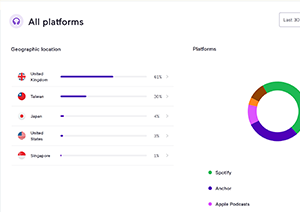
Anchor’s analytics
Anchor’s analytics provide critical information about how our podcasts are performing across the platform, and where our listeners are from, and how they access our show.
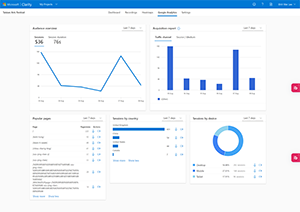
Microsoft Clarity
This tool collects user behaviour on our podcast website. The data helps me improve the page design based on how the page has been accessed.
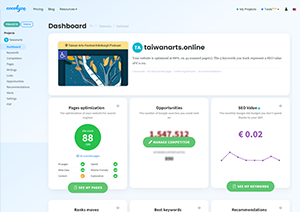
Cocolyze
To improve the visibility of the podcast website on the Internet, I use this tool to evaluate the effectiveness of the website’s SEO performance.
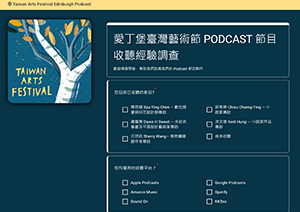
Survey
I designed a survey to collect podcast listener’s feedback and recruit participants for user experience studies.
Design iterations and improvements
The above tools help me get a clear picture of our podcast listeners and website users. Based on the data and feedback collected, I continuously adjust the design of the podcast website and the episode production strategy.
Redesign website user interface
The website’s recordings indicate that the initial version of the podcast website led to some unintended clicks on the podcast thumbnail. This realization highlighted the necessity for an improved visual design. The updated design now includes all episode feature images, moving away from a single podcast cover image. This new design better represents the podcast show, and the image is integrated as a background element on the page, reducing the likelihood of mistaken clicks.


Improve mobile design
Based on Anchor and podcast website analytics, most podcast listeners and website users use mobile devices to listen to the podcast and access the website, I redesigned several UI elements for mobile users. For instance, the buttons for different podcast platforms are enlarged, and the event timeline was changed from horizontal to vertical to allow scrolling in only one direction.




Revise the artist interview topics
In consideration of the survey outcomes and episode drop-off rates, it is evident that a majority of podcast listeners prefer connecting with the narratives behind the artists’ work and gaining insights about the artists themselves. In response, I have made adjustments to the interview topics to enhance the podcast content’s appeal to the audience.
Add ways to encourage podcast subscriptions
After having interviews with our podcast listeners, I realised that some people are not really familiar with the podcast culture. They don’t really know how to keep in touch with our programme. I, therefore, add the information about the subscription to the show note and the website homepage.
Enrich website content to boost the SEO rankings
After the podcast website launched, I found that the podcast website was not easy to be found on the search engine results page. To increase the website’s visibility on the Internet, I used Cocolyse to optimize the website’s SEO. According to Cocolyze’s report, the website content was not good enough for SEO. Therefore, I added some new web pages to enrich website content with search engine keywords, including the artist page, links to festival events, and the 3-min transcript of each episode. The changes improve the podcast website rankings from under 100 in July to an average of 44 in October.

My Learnings
The things I learned from this project are many and valuable.
Firstly, I became familiar with the whole podcast production process. Before starting this project, podcasting was a rather new field for me. However, as I learned more about the podcast production, I became more interested in the world of podcasting. I like the challenges of being a podcast producer.
Also, I enjoyed talking to artists in interviews. As a podcast host, I loved learning about how artists create things and the stories behind their art. I also wanted to know what people who listen to podcasts want to know about artists and how they listen to podcasts in their daily lives. This made me feel smarter and more thoughtful.
Most importantly, this project showed me how important it is to understand our listeners. The more we know about them, the easier it is to make podcasts and get more people to visit our podcast website when they search on Google.
I want to share what I’ve learned about recording, editing, making, and telling others about podcasts. I hope to inspire more artists and designers to share their thoughts and ideas with more people.
I’ll update this page after I’ve shared what I’ve learned with others.





